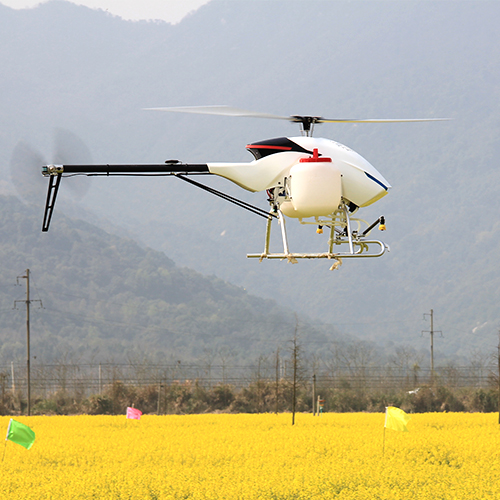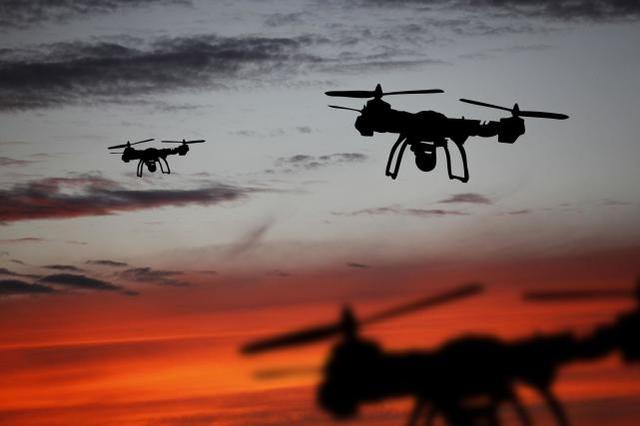
1、 Current situation of industrial development: dual wheel drive of policy dividends and technological breakthroughs
Explosive growth in market size
By 2025, the core industry scale of China's low altitude economy will reach 890 billion yuan, a year-on-year increase of 42%, with drone logistics, security, and agricultural applications accounting for over 60%. According to data from the International Drone Conference, the number of global drone companies has exceeded 32000, with China accounting for 43%. Companies such as DJI, Meituan, and Yihang have formed a full industry chain layout.
The policy system is gradually improving
The Civil Aviation Administration of China has issued the "Interim Regulations on the Management of Unmanned Aerial Vehicle Flights" (revised in 2024), which divides low altitude airspace into three categories: "open, restricted, and controlled" airspace. Drones weighing less than 7 kilograms can fly autonomously in open airspace below 120 meters, and the approval time has been shortened from 72 hours to 10 minutes.
Breakthrough in local pilot projects: Shenzhen, Chengdu and other places have designated "drone logistics dedicated waterways", and the Shenzhen Qianhai Free Trade Zone has achieved 30 minute cross regional drone delivery. Policy relaxation has accelerated the commercialization process.
Technological innovation blooms at multiple points
Breakthrough in endurance: The hydrogen fuel cell unmanned aerial vehicle developed by SF Express has a range of 480 kilometers and a load capacity of 15 kilograms, which is three times more efficient than traditional lithium battery models;
Cluster control: DJI Matrice 350 RTK supports collaborative operation of 100 drone formations with centimeter level positioning accuracy, achieving precise delivery of materials in emergency rescue scenarios;
Prevention and control technology: The "Skynet" anti drone system launched by China Electronics Technology Group Corporation integrates radar, electro-optical, and interference triple technology, which can achieve drone target recognition and emergency landing within 5 kilometers.
2、 Core application scenarios: from commercial implementation to social governance penetration
(1) Logistics Distribution: Refactoring the Urban End of Line Service Network
Meituan drone practice: 580 routes have been opened in 64 cities including Shenzhen and Beijing, forming a "3-kilometer 15 minute delivery circle", completing a total of 600000 orders with a delivery success rate of 98.7%. Its third-generation unmanned aerial vehicle can carry a load of 5 kilograms and has a wind resistance level of 6. It can automatically avoid obstacles and cross narrow passages between buildings.
Industry value: Drone logistics reduces end of pipe delivery costs by 40%, reduces labor demand in the pilot area of Shenzhen by 30%, and is expected to cover 200 cities nationwide by 2026, with an annual delivery volume exceeding 100 million orders.
(2) Urban governance: technology empowers precise prevention and control
Security Monitoring: The "Drone Prevention and Control Network" deployed during the Beijing Winter Olympics integrates AI vision algorithms to automatically identify and counteract "black flying" drones (with an accuracy rate of 95%). This technology has been promoted to super first tier cities such as Shanghai and Guangzhou.
Emergency rescue: In the forest fire in Yajiang, Sichuan, the Pterodactyl-2H drone flew continuously for 72 hours, transmitting real-time infrared thermal imaging data to help rescue teams accurately locate the fire source, with an efficiency five times higher than traditional methods.
(3) Industrial Upgrade: Empowering Traditional Industries for Digital Transformation
Agricultural crop protection: Jifei Technology P100 Pro drone has an average operating efficiency of 80 mu/hour per mu, reducing pesticide use by 30%. After large-scale application in cotton fields in Xinjiang, the cost per mu has been reduced by 120 yuan;
Power inspection: State Grid Corporation of China adopts DJI M300 RTK unmanned aerial vehicle, which improves the inspection efficiency of ultra-high voltage transmission lines by 10 times, achieves a defect recognition rate of 98%, and reduces the risk of manual inspection by 90%.
3、 Technological bottlenecks and industrial challenges
Complexity of airspace management
Currently, only 5% of low altitude airspace (below 120 meters) is open nationwide, and drone flights still face the challenge of "layered approval". A logistics company in Beijing has reported that cross regional distribution requires coordination with multiple departments such as civil aviation, air traffic control, and urban management, with an approval cycle of up to 7 days, which restricts large-scale operations.
Pressure of safety prevention and control
Frequent black flying incidents: In the first quarter of 2025, there were 137 reported incidents of "drone interference" nationwide, an increase of 22% compared to the same period last year. The existing prevention and control technology has a recognition distance of only 1.2 kilometers for micro drones (such as consumer grade drones), which poses a regulatory blind spot.
Technological iteration pressure
Battery technology bottleneck: The mainstream lithium battery energy density remains at 250-300Wh/kg, limiting the payload capacity (generally<10kg) and endurance (<2 hours) of drones. Although hydrogen fuel cells have broken through endurance, their cost is five times that of lithium batteries;
Insufficient intelligence: Existing drone obstacle avoidance systems have a misjudgment rate of 15% in complex urban environments such as high-rise buildings, canyons, and strong electromagnetic interference. Companies such as Meituan are testing beyond visual range obstacle avoidance solutions based on multi-sensor fusion.
4、 Strategic Response and Future Prospects
(1) Policy Innovation: Building a New System for Low altitude Economic Governance
Reform of airspace management
It is recommended to promote the experience of Shenzhen's "UAV Flight Management Service Platform" and achieve the digitization of the entire process of "application approval monitoring law enforcement". The goal is to increase the proportion of airspace below 120 meters to 20% by 2026 and establish a "layered classification" management system for airspace below 500 meters.
Standard system construction
Accelerate the development of industry standards such as the "Unmanned Aerial Vehicle Logistics Operation Specification" and the "Urban Low altitude Traffic Management Standard". The China Air Transport Association has initiated the preparation of the "Technical Requirements for the Construction of Unmanned Aerial Vehicle Distribution Stations", which is expected to be released by the end of 2025.
(2) Technological breakthrough: breaking through the core bottleneck of industrial development
Energy technology innovation
Supporting the research and development of hydrogen fuel cell unmanned aerial vehicles, the Ministry of Finance provides a 30% purchase subsidy for demonstration projects, with the goal of reducing the cost of hydrogen fuel systems to 1500 yuan/kW and achieving a range of over 600 kilometers by 2027.
Intelligent upgrade
Promoting the integration of AI big models and drones, SenseTime's "Tianji" system, developed by SenseTime, achieves autonomous task planning for drones through multimodal big models, reducing emergency response time by 40% in the Shenzhen smart city project.
(3) Ecological Construction: Cultivating Trillion level Low altitude Economic Industrial Clusters
Industrial park layout
We will focus on building three major "low altitude economic demonstration zones" in Shenzhen, Chengdu, and Xi'an. Qianhai in Shenzhen has gathered 127 unmanned aerial vehicle companies, forming a complete chain of "research and development manufacturing services", with revenue exceeding 80 billion yuan by 2025.
International cooperation expansion
Participate in the revision of the United Nations Convention on International Civil Aviation (Chicago Convention) and promote the development of international airworthiness standards for drones; DJI collaborates with the European Space Agency to develop an "Urban Air Traffic Management System" and export Chinese technology solutions.
5、 Conclusion: Low altitude economy opens a new era of urban development
The maturity of drone technology and the rise of low altitude economy are reshaping urban spatial utilization patterns and economic development forms. From the "air logistics network" of Meituan drones shuttling between buildings to the "air lifeline" in emergency rescue, the low altitude field has become a strategic high ground for technological innovation and industrial transformation. With its policy leadership advantage, technological innovation capability, and vast application scenarios, China is expected to form a trillion level low altitude economic industry system by 2030, leading the global urban air traffic (UAM) revolution. As the director of the Civil Aviation Administration of China said, "Low altitude economy is not a multiple-choice question, but a must answer question. Whoever solves the problem first will win the initiative in future urban competition



